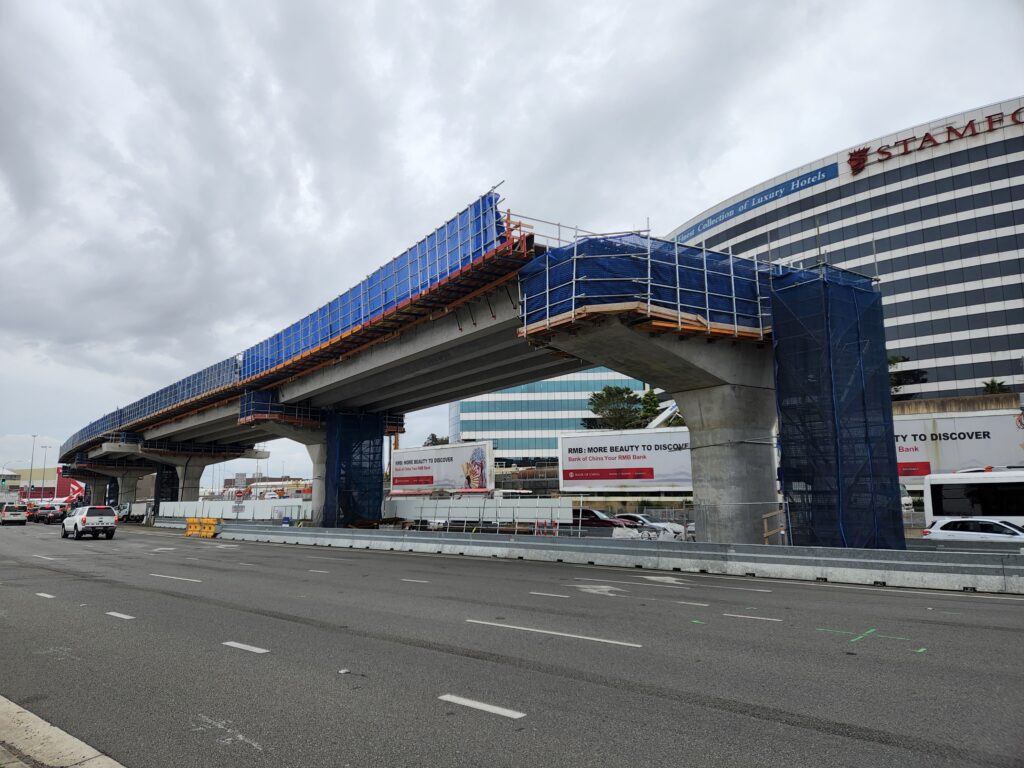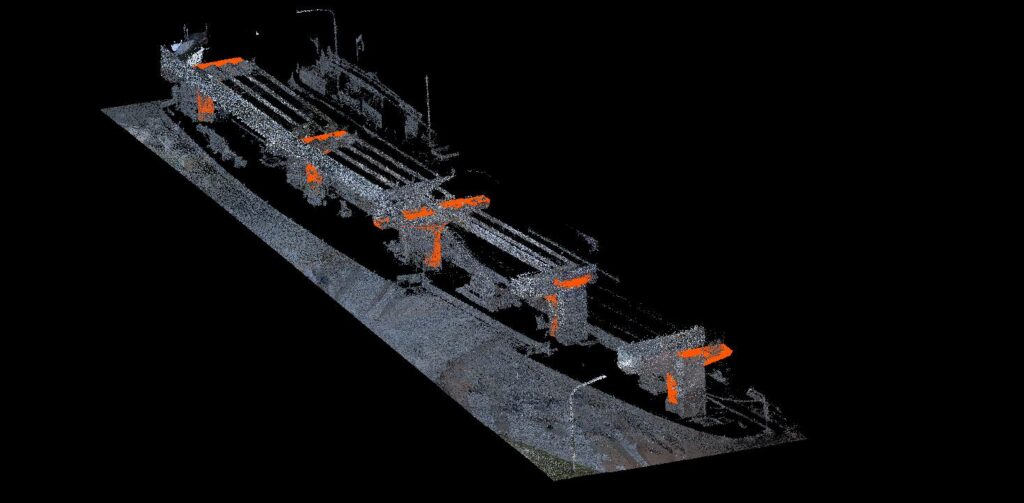Digital Twins in Construction
Digital twin is a digital representation of physical environment that is connected each other to perform a data exchange. As a result, digital twins in construction has becoming one of the most popular technology used for managing project nowadays. With various application and implementation, this approach has been proved to improve effectiveness and efficiency of construction project management.
Digital Twins in AEC Industry
Digital twins in construction approach started with the idea to develop a digital model of a physical construction project. We usually translate static digital model as Building Information modelling (BIM). By using BIM, we will not only have the geometric 3D model of our building or infrastructure, but also some more detailed information such as material, planned schedule, budget, and even the supplier of the material. This information provided us with more comprehensive data to help us manage the construction project in different part of its life cycle.
Digital twins in Architecture, Engineering, and Construction (AEC) industry can have different level and capabilities. Starting from descriptive twins, informative twins, predictive twins, comprehensive twins, and autonomous twins. To be able to produce data and exchange from the digital and physical twin, we need to adapt some technology. Among many different technology used, BIM appears to be one of the most popular option used so far [1]. For the data acquisition, some technology used is ranging from camera, Ultra Wideband (UWB), RFID, GPS, Lidar Scanner, temperature, displacement sensor, etc. To give a comprehensive information about data collection technology used in the construction digital twin, we can see the table below that is adapted from 2.
Technology used for Digital Twins in Construction
| Technology | Type of Data |
| Temperature sensors, strain gauge, asphalt strain sensor, horizontal inclinometer, load cells, accelerometer, displacement sensor | Mechanical sensor data |
| Camera | Image and video |
| Temperature sensor, motion sensor, door sensor, humidity and CO2 sensor, wind speed, air quality | Environmental sensor data |
| UWB, RFID, GPS, industrial wearable | Positioning data |
| LidAR scanner | 3D point cloud |
| Energy monitoring system, security monitoring system, medical gas pipeline system | Energy data |
| Vision and wearable Inertia Measurement Units (IMU), gyroscope, magnetometer | Kinematic data (body movement data) |
Different Application of Digital Twins in Construction
We can use digital twin in different phase of construction project throughout its lifecycle. Below are some example and summary of digital twins application based on [3] and also other related research paper.
Digital Twins in Design and Engineering Phase
- Digital model for planning. Information about existing condition is very important for planning. Scene data acquisition by using 3D point cloud and photogrammetry can help to ease the process of developing 3D model for the existing condition. Currently, some technology such as LiDAR scanning is becoming popular to map the landscape and existing building of the site project. This information is beneficial to ensure that the design can align with the actual condition in the field.
- Design optimization. In the design and engineering phase, we can use digital twin model to iterate and optimize the design without sacrificing too much cost. The iterative optimization process can reduce the design process and reduce additional cost due to rework in construction phase.
- Early design decision. With the capability to model the economic and environmental impact of the building, the digital twin can be beneficial for early stage decision. Stakeholder can choose different alternative of design, material, and construction process to obtain their goals and make a decision in early design stage.
- Construction planning. By combine the 3D model, schedule plan, and budget information, engineer and project manager can simulate the sequence of the construction project. It allows iteration to find the most optimum project planning to reduce cost, reduce clash between activities, and avoid idle project. As a result, this can lead to improved design quality, reduced errors, and cost saving.

Digital Twins in Construction Phase
- Assessing structural integrity of the object. Ranging from building, bridge, road, and dams, the structural integrity of a built environment is a very important aspect to control during the construction phase. Using various data such as strain gauge, accelerometer, displacement, and asphalt strain sensor can help the construction manager to monitor the structural integrity of the object.
- Resource management. By using positioning sensor such as UWB, Radio Frequency Identification (RFID), and Global Positioning System (GPS), we can track our resource in construction project. The example of application of digital twin for resource management including equipment tracking, worker tracking and material tracking. Other than previous tracking technology, we can also use 3D point cloud data as a material tracking method. Example: Material tracking in condtruction project.
- Project monitoring and schedule management. Photogrammetry, images, and 3D point cloud data are very popular for progress monitoring in construction project. We can compare the scanning data with the as design model to check the differences and get the construction progress. By having this data, project manager can develop better schedule planning based on real-time progress of construction. Example: Laser Scanner for project monitoring
- Quality management. We can use laser scanning data for quality management in construction project. Since 3D point cloud data can give a precis 3D model of the built project, we can compare the geometry position with its actual planning. Example: Onsite quality check for installation of prefabricated wall panel
- Safety and Health monitoring. Safety and health monitoring is highly related to the positioning of different resource in the site project. For example, if the worker’s location is too close with heavy equipment, this situation can lead into a crashing or caught in between accident. Besides, the construction worker also need to be aware of their location to avoid falling and struck-by incident. For this capability, digital twin with positioning system sensor will be beneficial to reduce the accident in construction project.


Digital Twins in Operation and Maintenance Phase
- Energy optimization. One of the biggest carbon emission generator in construction project is during the operational phase. Therefore, energy monitoring and optimization becomes one of the most popular application of digital twin. By using simulation, the digital twin can predict energy usage of the building through a certain period of time. By using Artificial intelligence and automation, the model can also optimize the energy usage and thermal comfort.
- Fire management. Fire is one of the most common accident happen in a building. Some digital technology such as smoke detector and camera can help to assist the fire management. The digital twin-enabled anomaly detection system has the potential of providing a continuous condition monitoring of the building assets. The fire alarm can be used to provide a warning for the building manager. Camera surveillance will help to identify the location of the fire for further mitigation. This approach is beneficial especially in a large scale building with many rooms to be managed.
- Environment quality management. In order to improve occupant comfort without sacrificing cost of operation, digital twin can monitor some parameter such as temperature, humidity, and air quality. By monitoring and tracking the environment quality, the building manager will be able to ensure that the building comply with the standard.
Digital Twins in Demolition and Recovery Phase
- Conservation and reservation of a heritage asset. Together with Augmented Reality (AR), people has been used BIM for managing information heritage asset that might have to get demolished in the near future. The information stored in the database and can be used to produce a virtual tour to enhance visitor interest.
- Simulation of demolition waste. By utilizing historical data of demolition waste, we can use digital twin to simulate the waste prediction for a demolition activity. The 3D model of the building will be beneficial to extract material take off and predict the waste by using a developed model. Predicting a demolition waste and reduce it is one of our effort to reduce wastage from construction material after demolition. As a result, it is expected that the material can be used for future construction or recycled to improve circular economy application in construction industry.
As conclusion, digital twins in construction can be applied in different stage of construction project. It need different type of sensor and technology to produce different capability needed by stakeholders. As a result, we can customized our digital twin based on our need and goals. Furthermore, its capability to produce prediction and simulation will support an early decision making for the stakeholders.
GeoAI team is ready to assist you building your Digital Twin model in every stage of your project. You can see some of our portfolio in our Services page. We are also thrilled to announce our new digital twin platform that can help you maintain your construction project easily and effectively.
Reference
[1] Chen, X., Chang-Richards, A.Y., Pelosi, A., Jia, Y., Shen, X., Siddiqui, M.K. and Yang, N. (2022), “Implementation of technologies in the construction industry: a systematic review”, Engineering, Construction and Architectural Management, Vol. 29 No. 8, pp. 3181-3209. https://doi.org/10.1108/ECAM-02-2021-0172
[2] Tuhaise, V.V., Tah, J.H.M., Abanda, F.H. (2023), “Technologies for digital twin applications in construction”, Automation in Construction, Vol. 152, August 2023, 104931. https://doi.org/10.1016/j.autcon.2023.104931
[3] Opoku, D.J., Perera, S., Osei-Kyei, R., Rashidi, M. (2021), “Digital twin application in the construction industry: A literature review”, Journal of Building Engineering, Vol. 40, August 2021, 102726. https://doi.org/10.1016/j.jobe.2021.102726
Category List
- 3D Point Cloud
- Artificial Intelligence
- Asset Management
- Digital Twin
- Featured
- Hardware
- Knowledge Graph
- LiDAR
- News
- Site Monitoring
- Uncategorized
- Vegetation Monitoring
- Virtual Reality
Recent Post
- What is Digital Terrain Model (DTM)?
- Advancing Pavement Defect Detection with AI and 3D Point Cloud Mapping
- Expanding LiDAR Applications for Asset Management
- What is Digital Elevation Model (DEM)?
- Processing Drone Photogrammetry Point Clouds for Ground Extraction